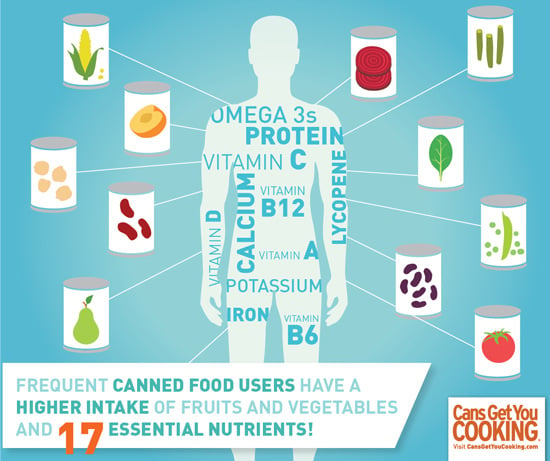About The Buzz: Eating Canned Vegetables Boosts Nutrients, Not Sodium?

WHAT THEY’RE SAYING
Of the top 10 contributors of sodium in the diet – canned vegetables isn’t one of them.
WHAT WE KNOW
Americans are falling short – far short – of getting enough vegetables in their diets. Only 13% are meeting their daily needs.1 Experts agree that all forms of vegetables – whether fresh, frozen, canned, dried or as 100% juice – are essential for a healthy diet.2
At the same time, more than half of Americans are trying to limit or completely eliminate sodium in their diets.3 This is in line with current dietary guidance to limit sodium to no more than 2,300 mg per day for most Americans.2
According to the Centers for Disease Control and Prevention (CDC), the top contributors of sodium in the diet are pizza, cold cuts/cured meats, breads/rolls and burgers/sandwiches.4 Canned vegetables are not listed at all.
HOW DO WE KNOW THIS?
Eating canned vegetables boost nutrients, not sodium. A recent study published in the Journal of the Academy of Nutrition and Dietetics found that total sodium in the diet is comparable whether people eat canned vegetables regularly or not at all,5 suggesting that sodium content of canned vegetables is inconsequential in the context of the total diet. And, an analysis published in Nutrients found that children and adults who ate six or more canned food items over a two-week period were more likely to meet or exceed recommended daily allowance for 17 essential vitamins and nutrients than those who ate one to two canned food items over the same two-week period.6 Other studies all found that canned vegetables and fruits have similar – or better – nutritional profiles as their fresh and frozen counterparts.7-10 Additionally, five types of popular canned vegetables (black beans, corn, green beans, peas and tomatoes) all meet Food and Drug Administration (FDA) guidelines for a low-sodium food (140mg sodium or less per serving), and nearly all have varieties that meet criteria for carrying a “very low sodium” label (35mg sodium or less per serving).
OUR ADVICE
Canned vegetables can be the hallmark of a healthy diet. Canned vegetables are nutritionally similar to fresh and frozen varieties, and all forms of produce help people meet their daily intake for vegetables. Even though canned foods are not a top sodium contributor, it is a nutrient of concern and something people need to limit. The good news is that there are plenty of lower-sodium canned vegetable options in the marketplace. You can also drain canned vegetables to reduce sodium content by 36%, while draining plus rinsing with running water cuts sodium content by 41%.11 Fill up your pantry – or “cantry®” – with some canned vegetables to prepare quick, nutritious, everyday meals and snacks for you and your family.
Inspiring, Nutritious Recipes: CansGetYouCooking.com.
Infographs: Canned Foods & Essential Nutrients | How To Reduce Sodium in Canned Veggies
Video Center: Selection. Storage. Preparation.
How Many Cups Do You Need?
Key Nutrients in Fruits & Vegetables
Fruit & Veggie Database


